Related Research Articles
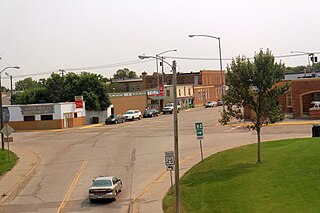
Wolf Point is a city in and the county seat of Roosevelt County, Montana, United States. The population was 2,517 at the 2020 census, down 4% from 2,621 in the 2010 Census. It is the largest community on the Fort Peck Indian Reservation. Wolf Point is the home of the annual Wild Horse Stampede, held every year during the second weekend of July. Wolf Point's Wild Horse Stampede is the oldest rodeo in Montana, and has been called the "Grandaddy of Montana Rodeos".
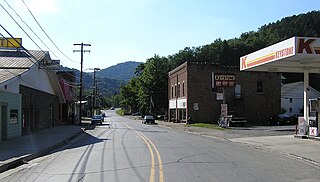
Austin is a borough along the Freeman Run (river) in southwestern Potter County, Pennsylvania, United States. The population was 482 at the 2020 census.
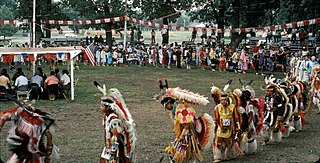
A powwow is a gathering with dances held by many Native American and First Nations communities. Powwows today are an opportunity for Indigenous people to socialize, dance, sing, and honor their cultures. Powwows may be private or public, indoors or outdoors. Dancing events can be competitive with monetary prizes. Powwows vary in length from single-day to weeklong events.
United Indians of All Tribes is a non-profit foundation that provides social and educational services to Native Americans in the Seattle metropolitan area and aims to promote the well being of the Native American community of the area. The organization is based at the Daybreak Star Cultural Center in Seattle, Washington's Discovery Park. UIATF has an annual budget of approximately $4.5 million as of 2013.
The Guilford Native American Association (GNAA) is a Native American community association in Guilford County, North Carolina. It is a North Carolina State-recognized American Indian Organization, and is a United Way referral agency.
Saugeen First Nation is an Ojibway First Nation band located along the Saugeen River and Bruce Peninsula in Ontario, Canada. The band states that their legal name is the "Chippewas of Saugeen". Organized in the mid-1970s, Saugeen First Nation is the primary "political successor apparent" to the Chippewas of Saugeen Ojibway Territory; the other First Nation that is a part of Chippewas of Saugeen Ojibway Territory is Cape Croker. The Ojibway are of the Algonquian languages family. The First Nation consist of four reserves: Chief's Point 28, Saugeen 29, Saugeen Hunting Grounds 60A, and Saugeen and Cape Croker Fishing Islands 1.
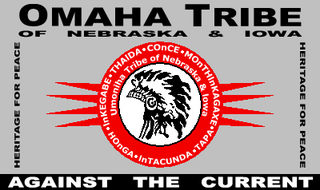
The Omaha are a federally recognized Midwestern Native American tribe who reside on the Omaha Reservation in northeastern Nebraska and western Iowa, United States. There were 5,427 enrolled members as of 2012. The Omaha Reservation lies primarily in the southern part of Thurston County and northeastern Cuming County, Nebraska, but small parts extend into the northeast corner of Burt County and across the Missouri River into Monona County, Iowa. Its total land area is 307.03 sq mi (795.2 km2) and the reservation population, including non-Native residents, was 4,526 in the 2020 census. Its largest community is Pender.

The Gourd Dance is a Kiowa dance and song tradition that has become popular at modern powwows in southwestern Oklahoma.

The National Capital Area Council (NCAC) is a local council of the Boy Scouts of America within the Northeast Region that serves the Washington metropolitan area, including Washington, D.C., portions of Maryland and Virginia, and the U.S. Virgin Islands. The council offers extensive training, and administrative support to units. It is rated as a "Class 100" council by the National Council, which denotes that the NCAC is among the very largest in the country. Chartered in 1911, it is also one of the oldest. The council is divided into 21 districts serving ten counties in Northern Virginia, six counties in Maryland, the District of Columbia, the US Virgin Islands, and BSA units throughout the Americas. The council has a 5 to 2 ratio of youth members to adult leaders, which is among the highest of all the councils. The youth retention rate is currently 70% which was affected by COVID-19.

Red Clay State Historic Park is a state park located in southern Bradley County, Tennessee, United States. The park preserves the Red Clay Council Grounds, which were the site of the last capital of the Cherokee Nation in the eastern United States from 1832 to 1838 before the enforcement of the Indian Removal Act of 1830. This act resulted in a forced migration of most of the Cherokee people to present-day Oklahoma known as the Cherokee removal. At the council grounds, the Cherokee made multiple unsuccessful pleas to the U.S. government to be allowed to remain in their ancestral homeland. The site is considered sacred to the Cherokees, and includes the Blue Hole Spring, a large hydrological spring. It is also listed as an interpretive center along the Trail of Tears National Historic Trail.
Intertribal and pantribal are terms indicating an activity, organization, or event that extends across American Indian tribal boundaries, is common to multiple tribes, or involves the actions of more than one tribe.
The Lower Muskogee Creek Tribe (East of the Mississippi), also known as the Lower Muskogee Creek Tribe, is a state-recognized tribe in Georgia. The organization was denied federal recognition in 1981.
Dorseyville is an unincorporated suburb of Pittsburgh located in Indiana Township, Allegheny County, Pennsylvania, United States.
The Seaconke Wampanoag Tribe is one of several cultural heritage organizations of individuals who identify as descendants of the Wampanoag people in Rhode Island and Massachusetts. Multiple nonprofit organizations were formed to represent the Seaconke Wampanoag.
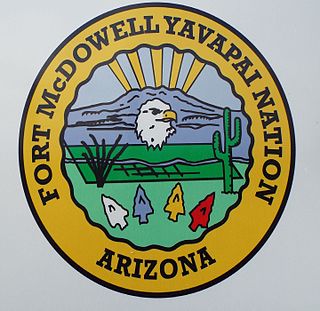
The Fort McDowell Yavapai Nation, formerly the Fort McDowell Mohave-Apache Community of the Fort McDowell Indian Reservation, is a federally recognized tribe and Indian reservation in Maricopa County, Arizona about 23 miles (37 km) northeast of Phoenix.
The Echota Cherokee Tribe of Alabama is a state-recognized tribe in Alabama and Cherokee heritage group. It is based in northern Alabama and gained state-recognition under the Davis-Strong Act in 1984.

The Coharie Intra-tribal Council, Inc. is a state-recognized tribe in North Carolina. The headquarters are in Clinton, North Carolina.
The Ridgecrest Petroglyph Festival is an annual weekend-long festival held in Ridgecrest, California, celebrating the Coso people, and specifically the 10,000-year-old petroglyphs of the Coso Rock Art District. The festival was founded in 2014, and attracted over 15,000 guests in its first year and was named one of Groupon's "10 Most Unique Autumn Festivals in the Country". Events include an Intertribal Pow Wow, street fair, and guided tours to the local petroglyphs.

The Big River First Nation is a part of the Cree Nation and is located in the Saskatchewan province of Canada. The Big River First Nation is also called ᒥᐢᑕᐦᐃ ᓰᐲᕁ mistahi-sîpîhk in Cree meaning "at the big river". They are signatories of Treaty 6 are located close to Pelican Lake Ojibway, the Big River and Prince Albert National Park. They are 120 km northwest of the city of Prince Albert and 19 km southwest of the village of Debden. The Big River First Nation has nearly 30,000 acres of reserve land. Their reserves include-
The Adai Caddo Indians of Louisiana is a state-recognized tribe in Louisiana and 501(c)(3) organization in Robeline, Louisiana. Its members are descendants of the Adai people.
References
- ↑ "Council approves task force to look into affordable preschool" . Retrieved 29 September 2017.
- ↑ "Council of Three Rivers American Indian Center - Routes to Roots". www.r-to-r.com. Archived from the original on 29 September 2017. Retrieved 29 September 2017.